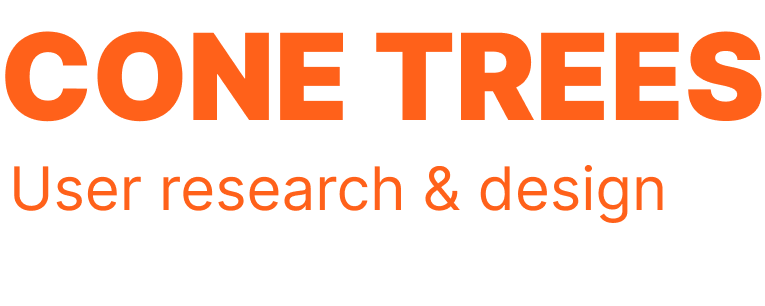There is no better way to understand the problems faced by specially abled users if you need to code website front end keeping accessibility in mind.
Being passionate about web accessibility, I ended up as the creator and owner of the global accessibility distribution list (and the wiki node on accessibility) at Sapient besides having given a presentation to peers on the advantages of coding accessible websites in relation to SEO. A rather common question I was asked by site developers was about how could they quickly get a grip on coding accessible websites. And I’d give a simple anwer- watch videos of the specially abled using the web.
There’s no better way to grasp the concepts of creating accessible websites than watching those who you’re creating them for use the web.
Below are a number of videos that will help you learn about how the specially abled use the internet and how frustrating it can be when they need to use like the rest of us but are restricted to varying levels from doing so.
Accessibility in Yahoo! Messenger
An interview and demo with Victor Tsaran, Accessibility Program Manager at Yahoo!, about using the JAWS screen reader with Yahoo! Messenger.
Karo Caran: An Introduction to Screen Magnification Software
Karo Caran takes you on a tour of screen magnification software — tools used by partially sighted users to enhance their experience of screen-based user interfaces. Karo shows you the basic toolkit and then applies those tools to some typical web sites to give you some perspective on how she uses magnification software while she browses the web.
Victor Tsaran: An Introduction to Screen Readers
Victor Tsaran is an accessibility engineer at Yahoo! who focuses on developing best practices for the creation of websites that work well with screen readers. In this video, he provides an introduction to some of the things that work well in the world of screen readers and others that fare more poorly
Doug Geoffray: From the Mouth of a Screenreader Part-1
GW Micro founder discusses the evolution of screen readers on the desktop and the nature of the challenges we face as we start addressing similar issues in the context of rich internet applications.
Doug Geoffray: From the Mouth of a Screenreader Part-2
GW Micro founder discusses the evolution of screen readers on the desktop and the nature of the challenges we face as we start addressing similar issues in the context of rich internet applications.
A pivotal role in the household
Marie-France has lost her voice and can only move a jaw muscle because of Amyotrophic Lateral Sclerosis (ALS), also known as Motor Neurone Disease (MND) or Lou Gherigs Disease. She shows how, with a single switch and AssistiveWare’s Proloquo, KeyStrokes and SwitchXS software, she continues to perform a pivotal role in the household by doing the shopping, managing the bank accounts and even designing her own web site.
Everything I can’t do in the real world I can do with my Mac
Joe Barnick was born with spinal muscular atrophy and cannot use a keyboard or mouse, yet thanks to assistive technology he can use his computer to do all those things he cannot do in real life.
Simon – Assistive Technology Case Study
An interview with Simon who uses a range of Assistive Technology to allow him to have control over some essential aspects of his life.
This video shows Simon using his:
- communication aid to talk
- environmental control to control his household equipment
- powered wheelchair, using a specialised control
- computer, using a scanning interface
- integrated system – using two head switches to access all of this equipment
One Thumb to Rule Them All
Mike Phillips is a gamer and freelance technology writer born with spinal muscular atrophy (SMA). Using his thumb and a proximity switch to access his computer he is a prolific journalist and has contributed chapters to several books. Assistive technology has opened the world for him.
Me and my computer
Elina was born with athetoid cerebral palsy. She is now 10 years old and her computer means life to her. Thanks to her computer she can write independently, correspond through email with her friends and express herself in school papers.
We can because we think we can
Leigh-Anne Tompkins was born with cerebral palsy. This did not stop her from making her dreams come true. She graduated magna cum laude in Fine Arts and now has her own company: Graphics Afoot Studio Design.
Ellen – Using Assistive Technology
Ellen uses Assistive Technology to go about her day to day life – both at home and in college. Ellen has Cerebral Palsy and has difficulty controlling her body – she is able to access her Assistive Technology using two head switches. Through these head switches, Ellen is able to drive her powered chair, communicate with people, access the computer and internet and control her TV and household equipment.
Head-designed
Giesbert Nijhuis is paralyzed from the neck down due to a spinal cord injury caused by a car accident. He now designs t-shirts, CD covers, film posters and much more using a head pointer, an on-screen keyboard and his Mac.
Russ – Eye Gaze Communication
Russ uses his eyes to communicate and control his environment – other than a system of blinking that he uses with his wife, this is his main form of interaction.
Russ has very limited eye movement – only up and down – and so the system had to be customised specifically for him. To choose things Russ looks at it on the screen for a certain amount of time.
This video shows Russ using his system.


Leave a Reply